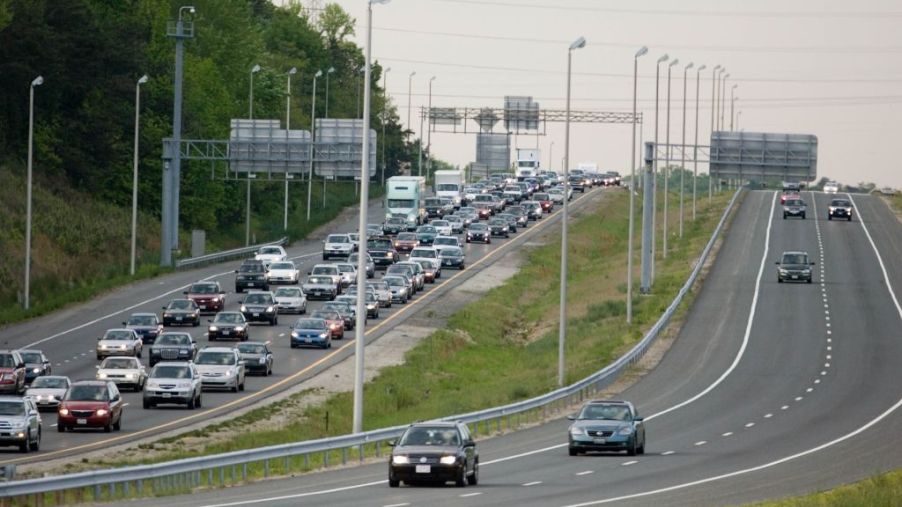
Are Faster Drivers Safer Drivers?
The world is full of people who give out well-meaning advice without actually checking the facts. It could be what they were taught in their childhood, beliefs formed off their own personal experiences as they reached adulthood, or just something they heard that sounds good from a smooth-talking friend.
One of those pieces of advice is to slow down while driving. This advice does hold some merit, as things like taking a curve too fast can cause a wreck, especially when you have a new teen driver behind the wheel. However, it’s not as black and white as everyone tries to portray it to be.
Studies are not backing up the ‘speed kills‘ slogan that we have been hearing for years. In an article released by Penn State, the highly respected university is putting the argument that slow drivers are safer drivers to rest by offering facts and statistics from several federal and state studies.
The article by Penn State starts off by saying “According to state and federal studies, drivers that are driving significantly below the average speed are the ones that are most likely to get involved in an accident. Studies show that the most accidents occur when the driver is driving at 10 mph slower than the speed limit. So someone going 45 in a 55 has a bigger chance of getting into an accident than someone driving at 65-70 mph.”
Your mother may not want you to read the rest of this article as it doesn’t push slow driving, but let’s check out some more facts.
How are speed limits determined
One of the main arguments for driving slower is that the speed limit is there for a reason, to keep everyone safe. Well, in many cases yes, but not in every instance.
Outside the Beltway wrote an article about a speed limit of 55 mph on federal highways that came into effect in 1974. The article reports, “That 1974 federal speed limit was arguably the most disobeyed and despised law since Prohibition. “Double nickel,” as it was often called, was first adopted to save gasoline during the Arab oil embargo, though later the justification became saving lives.”
So does this mean that all speed limits are set for the purpose of the government saving money? Fortunately, no. While this may come as a surprise to some, there is a sound scientific basis for setting speed limits and you have a bigger hand in deciding it than you may think.
Motorist.org reports that, “Numerous studies have shown that the 85th percentile is the safest possible level at which to set a speed limit.”
The 85th percentile is a study done on a particular road. The speed that motorists go is recorded, and the speed limit is then set at what 85% of drivers travel.
For example, if you have 100 drivers on a road, and 85 of the drivers travel at a speed of 55 mph, then the speed limit will be 55 mph. In other words, it’s not the small minority that insist on going 10 mph under the speed limit that determine how fast the speed will be, it’s the drivers who go a little faster.
Facts about fast driving vs slow driving
One basis for the slow drivers are safer argument is that your insurance will go up if you get caught speeding. Of course, this can be true depending on where you live.
But Allstate posted a blog on its page about the dangers of driving slow. Some of the points Esurance made were that slow drivers cause accidents because everyone else has to hit the brakes unexpectedly, especially when you come around a curve. This can cause a chain reaction of motorists hitting their brakes which can lead to a wreck. Meanwhile, the driver who inadvertently caused the pile-up drives off shaking their head about reckless drivers. Esurance also pointed out that driving too slow can sometimes get you a higher ticket than speeding can, like in New York where slow drivers are given a ticket of $195.
Tips for safer driving
So does this mean that you should hit the highways and immediately begin speeding 20 mph over the speed limit? No. If you have the urge to drive fast, there are race strips where you can get your fix.
If you really want to be safer while driving, going below the speed limit is not the answer. Drive Safely.net states the five major safety tips to keep you safe are: Look far ahead to see what traffic is like coming up, get the bigger picture, have an escape plan for if you find yourself in traffic with drivers who are driving in an unsafe manner, maintain the proper following distance in case you have to brake quickly, and reduce driving distractions like passengers who demand your attention or cell phones.
Also, don’t assume that accidents can never happen. Keep emergency tools on hand in case of a wreck or car troubles that leave you stranded.


